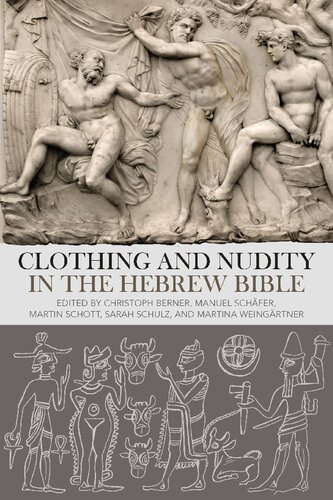

Most ebook files are in PDF format, so you can easily read them using various software such as Foxit Reader or directly on the Google Chrome browser.
Some ebook files are released by publishers in other formats such as .awz, .mobi, .epub, .fb2, etc. You may need to install specific software to read these formats on mobile/PC, such as Calibre.
Please read the tutorial at this link: https://ebookbell.com/faq
We offer FREE conversion to the popular formats you request; however, this may take some time. Therefore, right after payment, please email us, and we will try to provide the service as quickly as possible.
For some exceptional file formats or broken links (if any), please refrain from opening any disputes. Instead, email us first, and we will try to assist within a maximum of 6 hours.
EbookBell Team

5.0
90 reviewsThe volume discusses nudity and clothing in the Hebrew Bible, covering anthropological, theological, archaeology and religious-historical aspects. These aspects are addressed in three separate sections, enhanced by over a hundred pictures and illustrations. Part I places nudity and clothing in its ancient Israelite context, with discussions of methodology, the ancient Near Eastern evidence (including material culture and iconography), and an assessment of central aspects of the biblical material such as fabrication and uses of textiles, lexicography, theological and anthropological implications. Part II looks at key themes such as mourning, death, encounters with the divine and issues of power and status. Finally, Part III presents several close studies of key passages from narrative, prophetic and wisdom texts where clothing and nudity play an important role.Far beyond mere physical protection, clothing functions as a fundamental cultural symbol system: it indicates group identity, gender differentiation, specific occasions, and social status. Clothing is indisputably linked to how humans perceive and have perceived nudity, and customs of clothing and their relationship to concepts of nudity provide valuable insights into the norms and values of societies and religions. These aspects are all addressed across the volumes three parts. Part one places nudity and clothing in ancient Israel in context, with discussions of methodology, the ancient Near Eastern evidence (archaeology, material culture and iconography) and an assessment of central aspects of the biblical material (fabrication and use of textiles, lexicography, theological and anthropological implications). Part two looks at key themes such as mourning, death, encounter with the divine and issues of power and status. Finally, part three presents close studies of key passages from narrative, prophetic and wisdom texts where clothing and nudity play an important role.